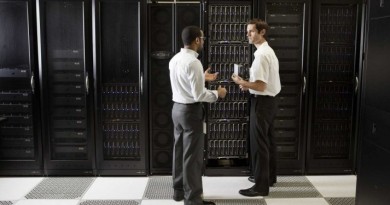Data Center Storage Solutions: An Overview
Innovative energy storage technology is a need of the hour in data centers across the world. Power backup is mandatory for 100% data center uptime. Traditional batteries inherently have a drawback: they are unsafe in an unstable environment. Data centers, well, have a tendency to be a little unstable.
Batteries in the data center are basically used for three purposes: for stabilising the input power, for supplying the data center equipments with standby power in case of a power failure at least till switching action between primary and secondary power sources takes place and for energy management.
When choosing any energy storage system, it has to satisfy three requirements.
- It has to supply instantaneous power to the load in the event of power failure or power sags
- It has to be capable of supplying the same amount of power to the critical load as that drawn from the utility
- It should be capable of supporting the load at least until the secondary source is up and running.
We also should keep in mind the overall efficiency of the storage devices. Some energy is consumed by the storage device itself to keep the energy equipment charged. This energy is not available to the IT devices and hence is considered as a loss. This loss should be as low as possible for an efficient storage device. This loss is comparatively lower in lead-acid batteries when compared to flywheels as batteries do not have frictional losses. This loss, however, is negligible in an ultracapacitor.
Another factor of consideration is the cost of the storage devices. Though the initial investment of storage solutions plays a vital role, total cost of ownership (including maintenance and operational costs) is a more logical category for analysis. Although the initial cost of lead-acid batteries is low, it will require heavy duty maintenance over time. Same is true with flywheels. In places where regular maintenance is not possible, ultracapacitors may be utilised.
Batteries are also not advisable for environments experiencing frequent outages for short duration of time. Constant charging and discharging without full discharge will decrease the life of the battery. For such environments, you might want to invest in ultracapacitors and flywheels. These devices are relatively cheap and require less maintenance.
The time taken to recharge an ultracapacitor is very less. But the discharge time is equally small. It is ideal for environments that require high power delivery with small recharge cycles. Batteries, however, have to be charged for a long time to reach its full capacity. Once charged, the discharge time is usually one-tenth the charging time.
Batteries produce noxious by-products that could lead to corrosion of metal, harm to the health of staff in the data center and could be potentially explosive in nature. This is not a concern with ultracapacitors and flywheels, however. Ultracapacitors release toxic gases only when they are fully burned.
From a data center’s point of view, one could never have enough back up power. The storage solutions should at least be capable of supporting the data center equipments until they can be safely shut down, if the secondary power systems fail to start. While one is ideal for high power requirements, the other lasts longer. Future innovators should consider hybrid solutions for instead of just opting for one specific technology. It is important to strike a balance between long lasting devices and reliable solutions.
Data Center Talk updates its resources everyday. Visit us to know of the latest technology and standards from the data center world.
Please leave your views and comments on DCT Forum.

